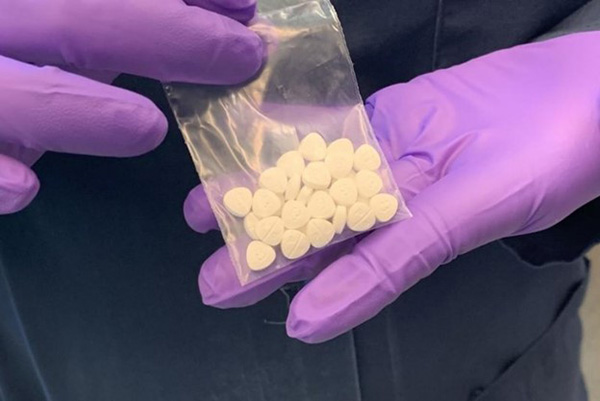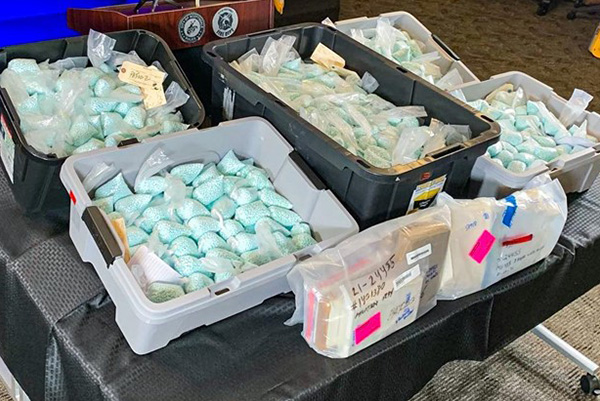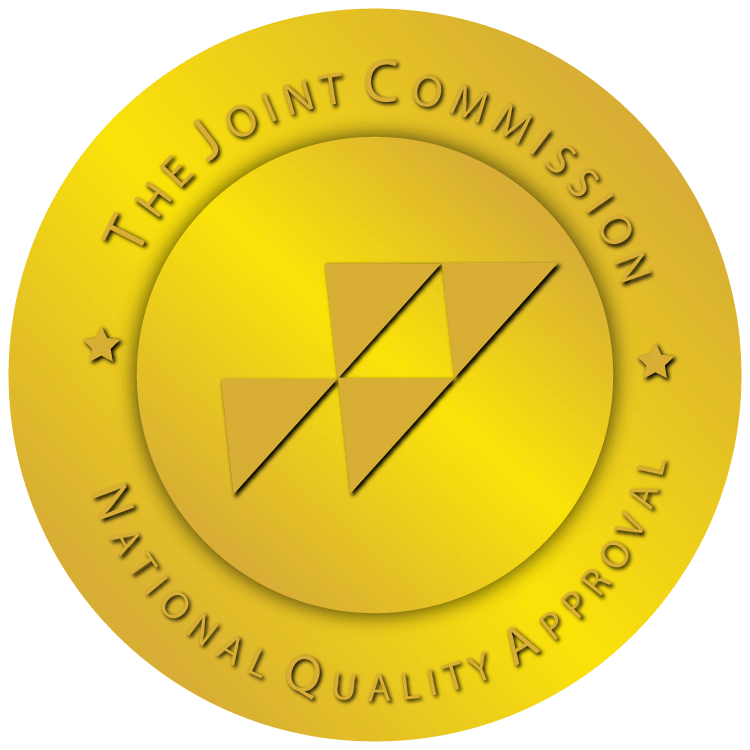
Recently, a relatively new synthetic opioid called isotonitazene began causing overdoses around the country. Isotonitazene, more commonly referred to as nitazene or ISO, is a synthetic opioid that has recently entered the unregulated drug market in the United States. Nitazenes are a subcategory of opioids, known as benzimidazole-opioids, which are all synthetic and incredibly powerful. While they were created decades ago as a potential pain reliever, they never received approval for medicinal use in America.
The DEA is increasingly alarmed by ISO’s growing presence. In powder form, it can look yellow, brown, or off-white. According to US agents, ISO has already been seen pressed into counterfeit pills and falsely marketed as pharmaceutical medication (like Dilaudid “M-8” tablets and oxycodone “M30” tablets).
What Is the Difference Between Prescription Opioids and Synthetic Opioids?
Many people are unaware that most prescription opioids are naturally derived. One of the main ingredients added to opioids, known as opium, is extracted from poppy seeds. Opium has been around for hundreds of years and has been used in a variety of different ways, mostly medicinal. Now, its primary use is for creating prescription opioids to help patients dealing with extreme pain.
Synthetic opioids differ from natural opioids because they contain no opium from poppies. The foundational ingredients in synthetic opioids are created in labs and are functionally similar to natural opioids but are often much stronger. One of the best-known synthetic opioids is fentanyl, which is almost 100 times as strong as morphine.
Synthetic opioids can be produced more cheaply and with a higher potency than other opioids and are thus often laced with prescription opioids sold in the unregulated market. Lacing can make the seller’s supply last longer and lead to more income but can easily cause issues for unknowing buyers. While it may seem daunting, it is still possible to fight the opioid epidemic—and it begins with you and your loved ones.
The Dangers of Nitazene
Increased Potential for Overdose
One of the biggest threats of synthetic opioids, nitazenes specifically, is that they are extremely powerful. While prescription opioids like morphine and oxycodone are strong enough to relieve pain from issues like broken bones and can cause overdose if misused, synthetic opioids are often 50 to 200 times stronger.
Just like other opioids, nitazenes present a variety of potential dangers.

Experts warn of nitazenes, a new street drug as deadly as fentanyl – UPI.com
Isotonitazene can be up to 20 to 100 times stronger than fentanyl, which is an extremely powerful synthetic opioid known for causing frequent overdoses. Even if the amount of ISO present is minimal, it can still increase the potential for overdose. This increases when in combination with other prescription opioids or street drugs like heroin and cocaine.
ISO Overdoses Are More Difficult to Reverse
Due to the strength of nitazenes, overdoses can be even more difficult to reverse than those caused by prescription opioids. While Narcan can still be used in an attempt to reverse an ISO overdose, medical professionals are unsure if it will work as well against the synthetic opioid. Higher doses of Narcan may be needed, or other methods may be necessary in addition to Narcan.
ISO Is Highly Addictive
Prescription opioids are well-known for their ability to cause dependency in those who use or misuse them. In fact, according to research by John Hopkins Medicine, it can take just two weeks to become physically dependent on an opioid, regardless of whether it was a valid prescription or why it was being used. Because opioids target opioid receptors and your brain’s internal reward system, the brain and body begin to crave the relaxation and euphoria that the medication provides.
While ISO itself hasn’t been studied regarding its potential for addiction, it’s known that fentanyl is extremely addictive. ISO is at least 20 times stronger than fentanyl, and it’s safe to say users have the potential to become dependent fairly quickly. As a result, ISO is likely one of the most powerful, addictive, and dangerous synthetic opioids in existence.
Most Test Strips Can’t Identify ISO
Another danger of nitazenes is that most test kits, including fentanyl test strips, can’t identify their presence. To detect ISO, most drug testing sites require specialized equipment that isn’t always accessible. Because of this, harm reduction methods aren’t as efficient for battling the dangers of isotonitazene and other benzimidazole-opioids.
How Prevalent Is Nitazene in the US?

The Epoch Times
– Florida Bans Nitazene, a New Class of Killer Drugs
Originally identified in a small area of the Midwest, Nitazenes are quickly making their way around North America. Though researchers are unaware of why prevalence has spiked again, nitazenes like Isotonitazene are now being mixed with other dangerous opioids and drugs. Currently, deaths due to nitazenes have been reported in multiple states, including Illinois, Indiana, Minnesota, and Wisconsin.
Other states, especially those on the east coast, are starting to see an increase of nitazene-related overdoses as well. New York, New Jersey, and Pennsylvania, as well as some southern states and California, have all reported nitazene distribution. Researchers fear that nitazene will add to the already devastating death toll caused by opioids.
Tennessee released data in September of 2022, based on 2019-21 findings. There were a total of 52 nitazene-involved deaths attributed to ISO. Among the 10 nitazene overdose deaths in 2020, the average age of the deceased was 40 years old. Nitazene deaths rose in 2021. In 2020 and 2021, the most common route of administration was injection. Other users find ways to smoke, snort, and ingest the drug. Based on stats, Naloxone was only administered to 23% of those involved in fatal overdoses. Four times as many overdoses in Tennessee in 2021 than in 2020, and this number could be underestimated because of low testing frequency.
Attorney General, Ashley Moody, issued a warning to Floridians in March of 2022. She warned that users have no idea of the lethal potential of ISO. She informed how the opioid is being mixed in with other drugs, possibly in pill or powder form, and that users often have no idea it is present in what they’re getting. The message went on to echo how Isotonitazene can kill from being inhaled or just by coming in contact with one’s skin.
Why Is ISO So Easy to Get?
With so much warning and information available, why are people trying ISO? For one, it’s so potent. Secondly, it’s fairly new, so laws have not caught-up with street behavior. Therefore, drug testing is lagging behind real-time usage. ISO was classified as a schedule I drug in 2020.
It’s been hiding from the law and mainstream society, so ISO has been easier to get. Many people can order it online. Due to these preliminary conditions, experts believe ISO is going to be a problem, paralleling that of fentanyl and heroin, in coming years. Even more scary, experts suspect that this is a pattern; ISO won’t be the last synthetic opioid to hit the streets.
Maryland Area and the Current State of Opioids
The statistics on opioids speak for themselves. These drugs are among the most powerful—and the most dangerous—on the illicit drug market today. Maryland’s Drug Take Back Day is one of many local efforts to combat abuse.
The greater metro area was first introduced to the news of the “new fentanyl” last Fall. News reports warned that D.C. was dealing with a new, deadly opioid, one that left the state in the wake of 498 fatal overdoses within a 12-month period. City officials point-out that the number is markedly higher than the city’s homicide rate and larger than the total drug deaths in 13 other states.
In 2020, Maryland saw a total of 2,499 opioid-related fatalities. Of all fatal drug overdoses throughout the state, 90% involved opioid abuse. Then, fentanyl-related deaths seem to be the issue; 2,326 of the aforementioned deaths were the result of fentanyl abuse. Of all Maryland’s opioid-related fatalities in 2020, over 93% were directly related to fentanyl.
It’s interesting to note that, like ISO, fentanyl wasn’t always an issue. As recently as 2016, only 53.6% of the state’s fatal overdoses were due to fentanyl. Of course, not all opioid-related deaths and overdoses are the result of illicit use; individuals get prescribed painkillers by their physicians, with a legitimate medical reason and can experience an accidental overdose. According to the Maryland Opioid Operational Command Center’s annual report, 445 fatal opioid overdoses occurred in individuals with a prescription from their doctor.
Protect Yourself from Opioids and ISO

In 2019, isotonitazene (ISO) made what is thought to be one of its first appearances since its original creation decades ago. Though it was first found in a few isolated spots across the Midwest, ISO has now been found in areas along the East Coast, Southern states, and even Canada.
It’s exceedingly more powerful than commonly prescribed medicinal opioids like morphine or oxycodone. It can be mixed in or “laced” with other opioids, and due to its potency can cause an accidental overdose almost immediately. ISO has been identified in both powder and pill forms, making it hard to differentiate from other drugs when mixed.
Sources:
- https://www.deadiversion.usdoj.gov/drug_chem_info/isotonitazene.pdf
- https://www.ncbi.nlm.nih.gov/pmc/articles/PMC8141068/
- https://www.dea.gov/stories/2022/2022-06/2022-06-01/new-dangerous-synthetic-opioid-dc-emerging-tri-state-area
- https://www.cdc.gov/nchs/nvss/vsrr/drug-overdose-data.htm
- https://www.cdc.gov/mmwr/volumes/71/wr/mm7137a5.htm
- https://beforeitstoolate.maryland.gov/wp-content/uploads/sites/34/2021/04/2020-Annual-Report-Final.pdf
Reviewed by Christopher Schwartfigure MS, LGPC, CAC-AD








